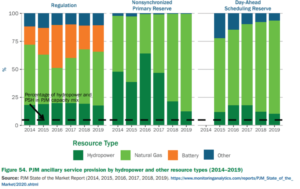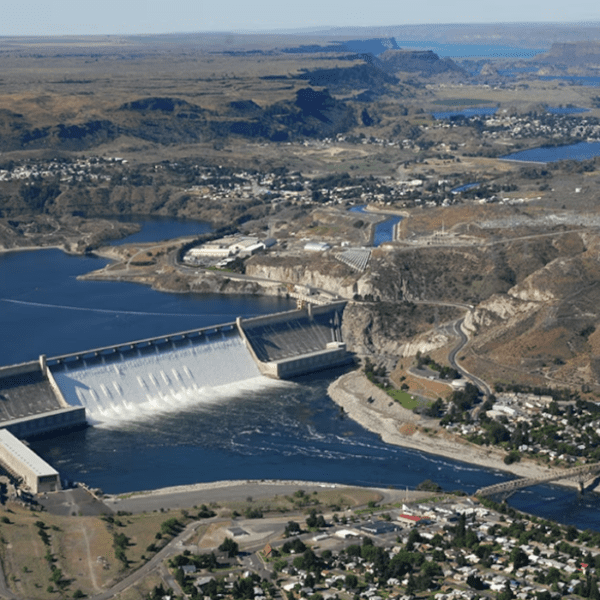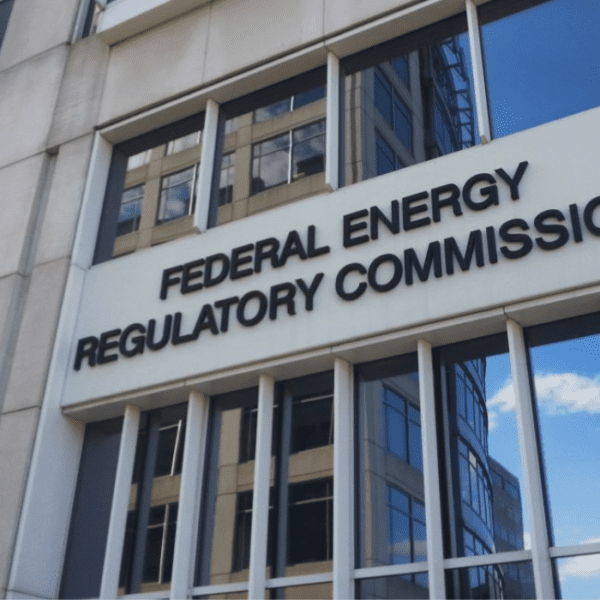The sun doesn’t always shine. At least it didn’t nearly four years ago, when on August 21, 2017, when the third rock from the sun experienced a solar eclipse. Forecasting a significant drop in solar generation, hydropower and grid operators spent months in advance of the event preparing for the shortfall. At Southern Company, which operates 32 FERC licensed hydro projects in the southeast with over 2,600 MWs of capacity, its modeling predicted that solar would dip to approximately 58 MWs, down from what was at the time a maximum output of 1,052 MWs.
As the Sun, the moon and the Earth aligned, it turned out that their prediction was pretty close, as solar generation output bottomed out at 87 MWs – a 95 percent reduction. What balanced the load? Hydropower, of course, as Southern Company’s generation schedule maintained a good alignment, with 15-minute projections, peaking at 875 MWs.
Solar eclipses, however, provide hydropower and grid operators with a significant amount of lead time to plan. But on a daily, hourly and minute-by-minute basis, hydropower is being leverage for electricity grid reliability and resiliency. In fact, according to PJM Interconnection, hydropower offers the most complete set of reliability attributes for flexibility including frequency response, voltage control, ramping, and black start capability.
Diving Deeper
Hydropower’s ability to ramp generation to meet demand load is considered to be one of its premium attributes. By way of comparison, the U.S. Department of Energy’s Hydropower Market Report (Market Report) analyzed the hourly ramping percentages of hydropower and natural gas across the Balancing Authorities, which are considered to be two of the most flexible plant types. On an hourly basis, the Market Report found that hydropower changed generation levels in 84% of hours, while the average of natural gas was 93%. However, the average one-hour ramp as a percentage of installed capacity was greater for hydropower than for natural gas, demonstrating hydro’s effectiveness.
Utilizing hydropower to meet hourly demand is just part of the story. Simply put, hydropower can do it fast. According to the U.S. Energy Information Agency, from a cold unit start, more than 70% of U.S. hydropower capacity can perform within 10 minutes, with less than 5% needing more than 1 hour. It’s also a go-to resource during an electricity black out. As an Oak Ridge National Laboratory report notes, hydropower represents less than 10% of U.S. electricity generation capacity but provides approximately 40% of black start resources.
The impact of hydropower’s grid reliability services comes into full view when looking at its performance of its regulation and reserve products at RTOs and ISOs. According to the Market Report, at PJM Interconnection, while hydro provides between 15–20% of regulation services, it’s significantly higher than its share of installed capacity in that market (<5%). Similarly, at California ISO, for spinning reserve services, hydropower offered more than 50% in three out of the four years examined by the report.

What Does This Mean?
In many ways, hydropower is greater than the sum of its parts. In addition to providing clean energy and helping to integrate other renewables onto the grid, like wind and solar, hydropower is a carbon-free resource that offers continuous grid resiliency in more ways than one. Its grid reliability services offer a window as to why it is needed to accelerate the Biden Administration’s goal of reaching a zero carbon grid by 2035. At the same time, the very services that hydropower offers must be valued and compensated in energy markets accordingly.
Ancillary grid services like frequency response may not be the clean energy buzzword of the day, but they make up the roadmap to decarbonization.
What’s Next?
The National Hydropower Association (NHA) is working hard to be provide awareness and education among policy makers about hydro’s unique contributions in a clean energy future.
At next month’s Waterpower Week event, owned and organized by NHA, a discussion about the role of hydro in today’s wholesale electricity markets will be front and center on Wednesday, April 28.
Leaders from ISO New England, Midcontinent Independent Systems Operator (MISO), and PJM Interconnection, L.L.C. will share their views about the challenges they are currently facing to “keep the lights on,” what’s needed to ensure grid reliability and resiliency, and where they expect wholesale electricity markets to go in the next five years.
Registration is now open for the virtual Waterpower Week. “Early bird” rates are available through the end of March.











